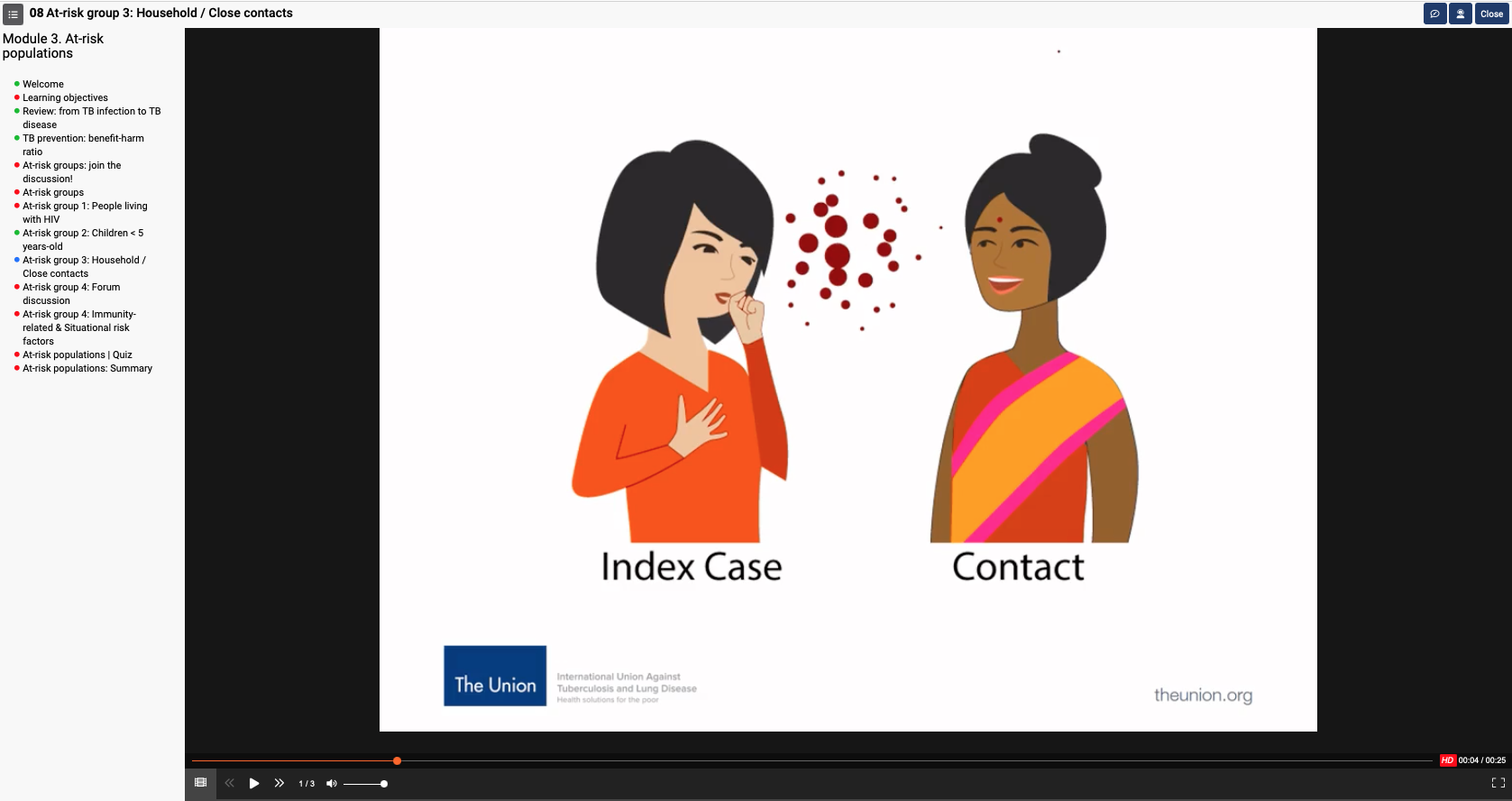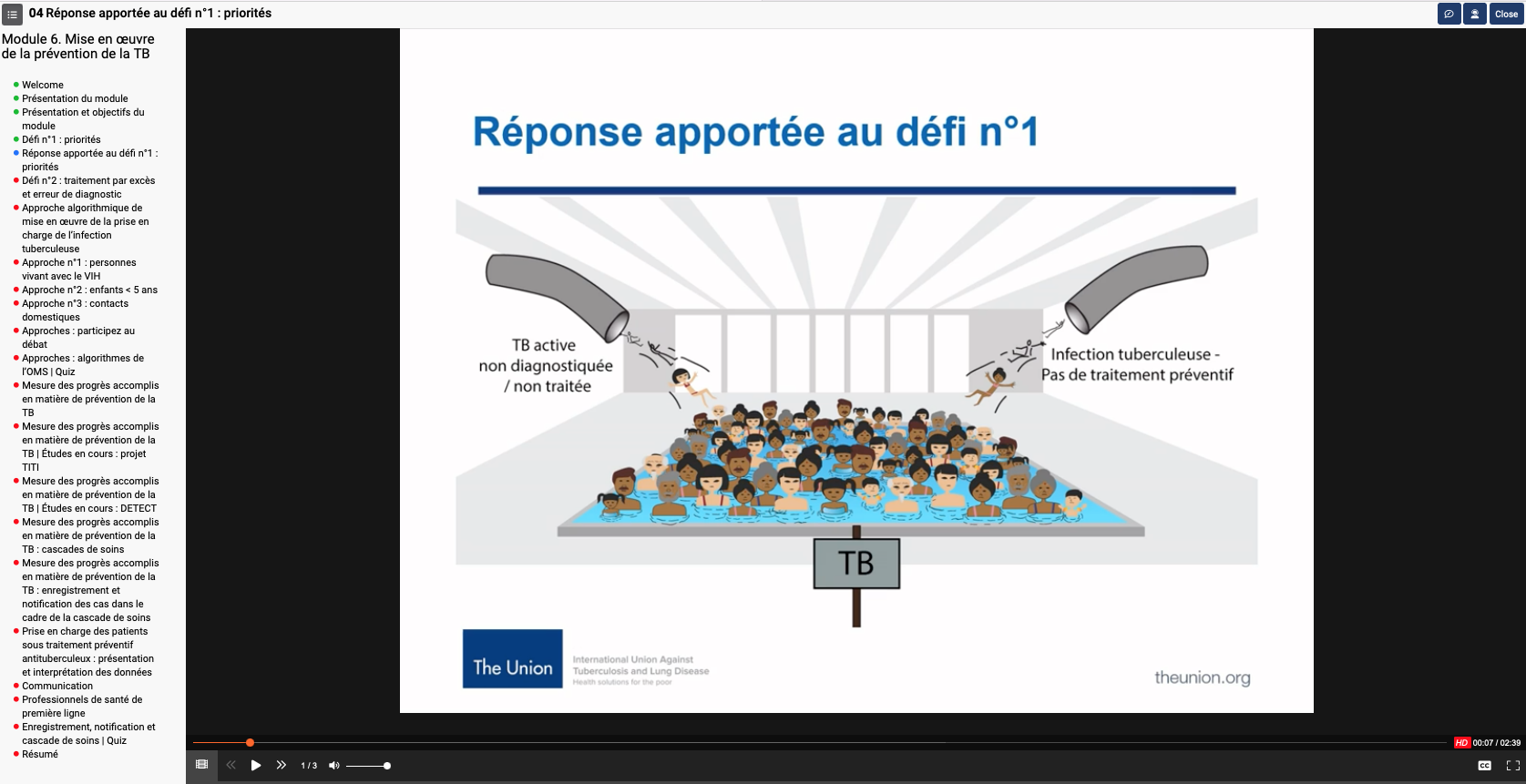Dr Riitta Dlodlo, MD, MPH – Senior Advisor at The Union

Global tuberculosis (TB) targets were off-track in 2020, as reported by the Global TB report by WHO (2021), due to the adverse impact of the COVID-19 pandemic on health services in general and TB services in particular. Some countries have managed to mount impressive mitigation measures but in several settings TB notifications have declined significantly and reported deaths from TB have increased. Regarding TB prevention, a 21% global drop to 2,8 million in the number of people who started TB preventive treatment in 2020 was reported compared with 2019 when 3,6 million received this treatment.
In October 2019 The Union launched the sought-after and free online training programme – Prevent Tuberculosis: Management of TB Infection, Part I. In March 2022, The Union is launching Part II. Designed to support healthcare professionals in resource-limited settings, the course aims to improve knowledge and understanding across all aspects of tuberculous infection (TBI), including identification and testing of people who are at risk of TBI, and TB preventive treatment (TPT) for people who are eligible and consent to take TPT.
We caught up with Dr Riitta Dlodlo, a senior advisor at The Union, who lives in Zimbabwe and has decades of experience in TB care and prevention. Dr Dlodlo shares her views on the value of taking courses such as this and explains why it is so important to equip people in high TB burden settings with the skills they need.
Tell us about the Prevent tuberculosis: management of TB infection course.
This course aims to build capacity and skills among people working in TB care and prevention so that they can be well equipped to respond to the needs and requirements of their patients and communities they serve. The overall goal of this Union course is to strengthen diagnosis and treatment of TB infection and increasing country-level implementation of TB infection management among at-risk population groups. They include, for example, household contacts of people with TB, particularly young children, people with various risk factors of developing TB if infected with TB bacilli, especially people living with HIV.
The course is most relevant for healthcare workers (often TB and HIV staff and clinicians) in high TB burden and resource-limited countries. The target audience we have had in mind when developing Part I and Part II of the course includes TB and HIV focal points and coordinators at all levels of health services, medical, nursing and clinical officers, trainers of health professionals, pharmacy, laboratory, environmental health and health information staff, people working in national programmes for TB, HIV/AIDS, non-communicable diseases etc – and everyone who wishes to learn more about TB and TB infection.
The ultimate global goal is to make a concerted effort to contribute to ending the TB epidemic through introducing, expanding and strengthening existing TB infection management – and I believe that this Union online course helps us take steps to work towards this.

Why are the skills taught on the course so vital?
According to the World Health Organization, a total of 1.5 million people died from TB in 2020. Worldwide, TB is the 13th leading cause of death and the second leading infectious killer after COVID-19 – so this gives you some idea of the scale of the problem. It is important to remind ourselves that TB is curable and preventable. It is vital that people have access to diagnosis and appropriate care at the earliest possible stage, as this is critical to reducing transmission. To end the global TB epidemic, a significant focus on TB prevention is essential. This is where the course we are talking about comes in – it is vital to improve quality of TB care and prevention services that unfortunately remain sub-optimal in some settings. Knowledgeable and confident healthcare professionals are key to continuous quality improvement of services.
What are some of the main benefits you have identified through the course?
The course provides participants with up-to-date information about the principles of management of TB and TB infection. The course is offered free of charge and the benefits to public health systems are far reaching. One of the key benefits is that course attendees learn how to operationalise international guidance, so that they can implement good quality services in their own settings.
What does the course mean to you personally and why are you so passionate about making a difference through capacity development among healthcare workers?
Since I joined The Union in 2003, I have served in several positions, including director of the Department of tuberculosis and HIV and I am now a senior advisor at The Union and committed to enhancing Union’s contributions in training and education in TB. I have been privileged to work with great leaders in TB and have followed closely the progress made to reduce suffering due to TB. I have also seen numerous recent reports of reversals of the gains made over the years prior to the COVID-19 pandemic.
If you take part in the course, you will meet me as a member of the faculty and learn that I am a strong believer in patient- or person-centred care and integrated services for people living with TB and other co-morbidities. This focus is shared by my co-facilitators who are Drs Grania Brigden and Ignacio Monedero for Part I of the course and Drs Ignacio Monedero and Miranda Brouwer for Part II.
I have a passion for active use of routinely available TB and TB infection data to strengthen the quality of both clinical and programmatic management at every level of services. I am a big believer in turning knowledge into action, which is why I think we can all keep learning to improve public health outcomes.
How does the course work?
As you would expect, the pandemic has shaken up the approach to learning and training and we are delivering many more online courses today compared with, for example, five years ago. The Prevent Tuberculosis: Management of TB Infection course is offered online and you can start it at any time and complete it at your own pace.
The format is conducive to both independent and group work. We always encourage people to form study groups to go through the materials together and find that online group sessions can be particularly helpful.
Part I of the course is offered in English, French and Spanish. Part II is offered in English and will be available in French soon.

What are your final thoughts about this course?
I would like to appeal to employers in both public and private health sector, profit and not-for-profit, to encourage their staff to complete the course and allow them to do it during working hours. It would be a welcome and probably a cost-effective investment in continuing professional development among health workforce.
Personally, I would be most grateful if every participant is able to feel confident about their role in management of TB infection services and be determined to apply their new learnings in their day-to-day work and share with their work mates and colleagues.
In terms of impact – all of us want to provide better quality TB and TB infection services for communities, families and individuals. Our work is about people and it can save lives – that’s what drives me every day.
Sign up to the course for free and see the range of Union courses on offer by visiting https://theunion.org/our-work/union-courses
Part I of the Prevent Tuberculosis: Management of TB Infection course was made possible with the financial support of Sanofi and SECOMISCA. Part II was made possible with the financial support of QIAGEN.
